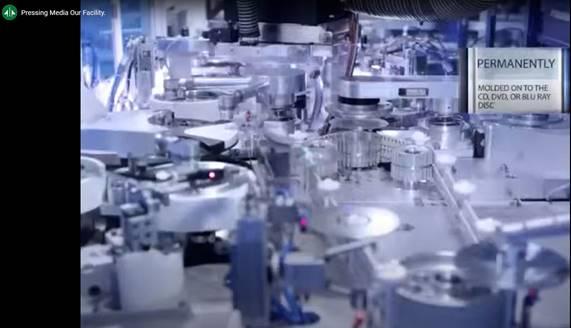Photo by Maor Attias
Understanding CD Replication
CD replication involves creating multiple copies of a CD from a pre-existing master disc. Unlike CD duplication, which uses a CD burner to copy content onto blank CDs, CD replication employs a more sophisticated process to ensure a high-quality and uniform product.
THE CD REPLICATION PROCESS
CD replication involves creating multiple copies of a CD from a pre-existing master disc. Unlike CD duplication, which uses a CD burner to copy content onto blank CDs, CD replication employs a more sophisticated process to ensure a high-quality and uniform product.
a) Glass Master Creation: The first step in CD replication is to create a glass master, which is a highly accurate stamper. The glass master is produced by coating a glass disc with a photosensitive layer and exposing it to a laser that replicates the data from the master disc.
b) Metal Stamper Production: The glass master is then used to produce a metal stamper. This involves electroplating the glass master with nickel, creating a negative impression of the CD’s data. The stamper is then separated from the glass master.

c) Injection Molding: Next, the metal stamper is placed in an injection molding machine. Molten polycarbonate plastic is injected into the mold, taking the shape of the CD. The plastic is allowed to cool, forming a replica of the original CD.

d) CD Printing and Assembly: After molding, the replicated CDs undergo a printing process to apply labels, artwork, and any required text. Finally, the CDs are assembled, including the insertion of the replicated discs into jewel cases, sleeves, or other packaging options.

Advantages of CD Replication
a) High-Quality Reproduction: CD replication ensures that each replicated disc is an exact duplicate of the master, maintaining the original audio or data quality.
b) Cost-Effectiveness: Replicating CDs in bulk is more cost-effective compared to duplication methods, as the replication process allows for greater efficiency and economies of scale.
c) Professional Packaging: CD replication services often include professional packaging options such as jewel cases, booklets, and inserts, enhancing the overall presentation and appeal of the product.
d) Compatibility: Replicated CDs are highly compatible with a wide range of CD players, ensuring accessibility for end-users.
CD Replication in the Digital Age
In an era dominated by digital streaming and downloads, CD replication remains relevant for several reasons:
a) Tangible Distribution: CDs provide a physical format for distributing music, software, promotional content, or educational materials, catering to a diverse audience that appreciates tangible media.
b) Merchandising and Branding: CDs offer artists and businesses the opportunity to create merchandise and establish their brand presence, enhancing their marketing efforts.
c) Collectability: CDs, particularly limited editions or autographed copies, hold value as collectible items, attracting avid collectors and enthusiasts.

Photo by cottonbro studio
CD replication serves as a crucial method for mass-producing CDs, ensuring high-quality duplicates from a master disc. Its advantages, including cost-effectiveness, professional packaging, and compatibility, make it a preferred choice for businesses and artists seeking to distribute their content widely. Despite the digital era, CD replication continues to play a significant role, providing tangible products and catering to a diverse audience with varying preferences.

